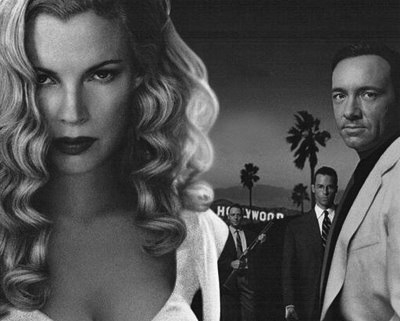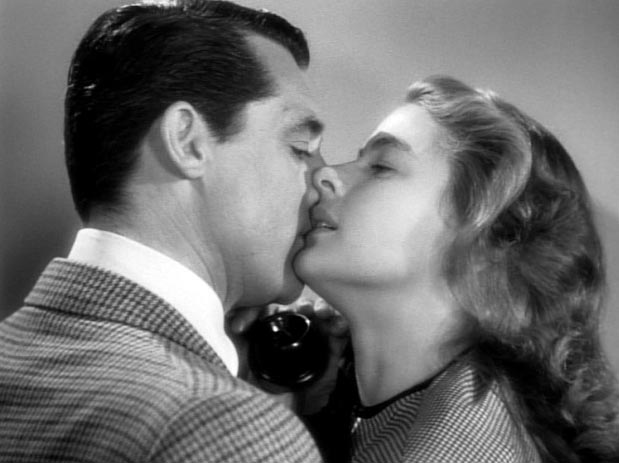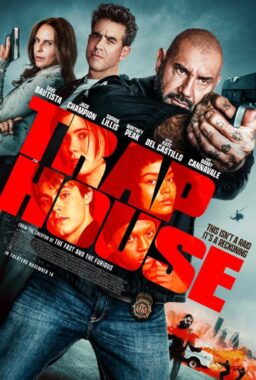Q. I have noticed a shift in the marketing of the movie “A.I.” What started out as a media blitz promoting the movie as almost “E.T. II”–another loving, touching, sci-fi Spielberg masterpiece–now seems to play up the film as dark and portentious, with Spielberg now quick to point out that this was a Stanley Kubrick project that he picked up and finished off. What’s your take on this? (Don Money, Andover MA)
A. I think the revised approach is more accurate. This is not a children’s movie and indeed contains many dark and disturbing images; it is closed to “A Clockwork Orange” than “E.T.,” although it has elements reminding me of both.
Q. In “The Fast and the Furious,” I think the best thing about the movie was that there were no computer-generated images (except for the opening credits). The movie was exciting because the car chases were real. That Charger really went end-over-end at the end of the movie. Compare that to “Driven,” where the car chases and crashes were less real than a video game at my local arcade. Even if “Driven” hadn’t been such an abysmal movie in every other way, the CGIs still would have ruined it. (Greg Berry, San Francisco CA)
A. It would be a shame if the art and craft of stunt driving were replaced by computers. There is a certain undefinable reality to the real thing that we sense, rather than see.
Q. With all of the computer animation in “Pearl Harbor,” why can’t the movie be considered a cartoon? “Who Framed Roger Rabbit,” “Mary Poppins” and “Song Of The South” all had humans in front of cartoon background and all of these movies had less animation than “Pearl Harbor.” At what point is a movie not considered live action and is considered animated? Could “Pearl Harbor” be considered for an Academy Award for best animation? (J. Gregory Keene, Irvine CA)
A. Animation is not a category. Otherwise, “Pearl Harbor” would be slugging it out with “The Mummy Returns” and “Driven.” And as a general rule, animation that looks like cartoons is considered separately from animation that looks like special effects.
Q. I just saw Jonathan Glazer’s “Sexy Beast,” which I really admired, and after writing my review decided to read what others have said about it. I was heartened by the largely positive response Glazer’s film has elicited, but disappointed that most critics felt compelled to express surprise and, in some cases, utter shock that Glazer is actually a graduate of (gasp!) music videos and television commercials. TV ads and music videos have been the primary source of new filmmakers for more than 20 years now–arguably, beginning with Ridley Scott who made his first feature, “The Duellists,” in 1977 –there yet there are film writers who behave as if this is some kind of new-fangled, and undesirable, trend. Why can’t we finally accept commercials and videos as just other training grounds for filmmakers? (Joe Baltake, film critic, Sacramento Bee)
A. You make an excellent point, and indeed some of the most visually alive new films, like Tarsem’s “The Cell,” Baz Luhrmann’s “Moulin Rouge” and Spike Jonze’s “Being John Malkovich,” are from directors with short-form experience. “Sexy Beast” is one of the summer’s real discoveries, and is likely to get an Oscar nomination for Ben Kingsley.
Q. Steve Ramos, a film critic for the CityBeat alternative weekly in Cincinnati, has been banned from the Esquire Theater for exposing the theater’s decision to cut a scene out of Wayne Wang’s “The Center of the World.” He’s not allowed to even buy tickets at the theater, which has also removed CityBeat distribution racks, and canceled all advertising in the alternative weekly. Your comment? (Greg Nelson, Chicago)
A. Gary Goldman, president of the company that owns the theater, has followed a wrong decision with a foolish one. It was illegal for his company to alter the film, and Ramos was doing his job by reporting it. Now the theater, which specializes in art films, is sending a message to its customers that it is provincial and small-minded, and has no respect for the films it shows or for the maturity of its customers. The film was released under an adults-only policy by Artisan; adults do not need to be protected by self-appointed censors.
Q. In the aftermath of the scandal about Sony’s fake critic David Manning, the Answer Man asked, “Has anyone ever actually seen Jeff Craig of ‘Sixty Second Previews’ at a movie? For that matter, does anyone know what ‘Sixty Second Previews’ is? I ask in all sincerity.”
I once worked for a radio station that aired “Sixty Second Previews,” a daily modular program one minute in length. Jeff Craig is the host of the thing, but since the program comes on CD a month at a time, he apparently hasn’t actually seen most of the movies–thus “previews,” not “reviews.” Still, his gushing about an upcoming movie he hasn’t yet seen ends up being used as blurbs in movie ads. (Ron Breeding, Little Rock AR)
A. In a magazine profile, Craig said he has employees who attend some of the movies for him, since he’s too busy to see all of them himself. Strange, since real critics actually see the movies they review, and even find time to write whole long reviews about them, instead of action-packed blurbs.
Q. The Internet Movie Database quotes you as saying “I am utterly bored by celebrity interviews. Most celebrities are devoid of interest.” Did you really say that, and if so, what do the celebrities think? (Murray Leeder, Calgary AB)
A. I think they’re more bored than I am. Interviews involving access, insight and personality are one thing. But mostly what we get these days are three-minute charades monitored by paranoid publicists, with the celebs repeating the same sound bites over and over. I’ll never forget long, free-associating interviews I had with stars like Lee Marvin, John Wayne, Woody Allen, Shirley MacLaine and Robert Mitchum, who said what they thought, didn’t give a damn about image, and worked without a net–or a publicist.
Q. You stated in your review of “Swordfish” that Dominic Sena is getting better as a director. Let’s not forget his first film was the small, powerful Brad Pitt film “Kalifornia” (1993). I eagerly awaited his follow-up for seven years. The follow-up I got was the pointless “Gone In 60 Seconds.” (Josh Korkowski, Minneapolis, Minn.)
A. My oversight. “Kalifornia” was on my list of the best films of 1993. It was an amazingly good debut.
Q. Must every production and distribution company involved in a film play its corporate logo sequence at the start of a movie? At a recent screening of “Bridget Jones’s Diary” I counted no less than five such sequences. Each time I thought the film might be starting it turned out to be yet another logo sequence. On a related note, am I alone in thinking that the quality of these logo sequences has deteriorated over the years? Compare today’s long, boring, computer-generated sequences with the classics of the past, such as the roaring lion of MGM, the thrilling music of 20th Century Fox, and, best of all, Rank’s man-with-a-gong. These were instantly recognizable and acted as a cue to the moviegoer to settle back and relax, as the film was about to start. (Alun C. Evans, Seattle WA)
A. International coproductions mean lots of different companies put money into movies, and they all want to tack on their own titles. I agree with you that the classic titles are the best. Amazing, that Miramax paid a reported million dollars for its logo, which is that tacky computer-generated skyline. My favorite among the new ones: The leaping tiger for Mandalay Entertainment.











